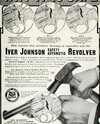westernrover
Member
- Joined
- May 4, 2018
- Messages
- 1,613
It seems to me that the transfer bar is simpler and better way to do this task. Why doesn't S&W use a transfer bar?
A transfer bar is repeatedly hit every time the revolver is fired or dry fired. Predictably, it breaks at some number of impacts. I have a Ruger with a transfer bar and I don't expect it to break in my lifetime. Other people fire theirs much more often and would need to consider replacing it at some interval. I don't care to speculate what that interval might be, but there are certainly records of broken transfer bars.
S&W can rightfully consider their design that only blocks the hammer when the trigger is not pulled to be a better design. I have a S&W too and this being my double-action revolver (the Ruger is SA), I would certainly expect to exceed the life of a transfer bar if it were to have one. I've fired it tens of thousands of times and could expect to continue to accumulate round-count for decades to come. It could have a transfer bar which I would replace to prevent failure, or it could simply not. Since a broken transfer bar results in a failure to fire and there is no practical expedient way to resolve the malfunction in use, I prefer the simpler design that has no transfer bar and does not depend on any additional part to function, least of all one which gets repeatedly hammered.


